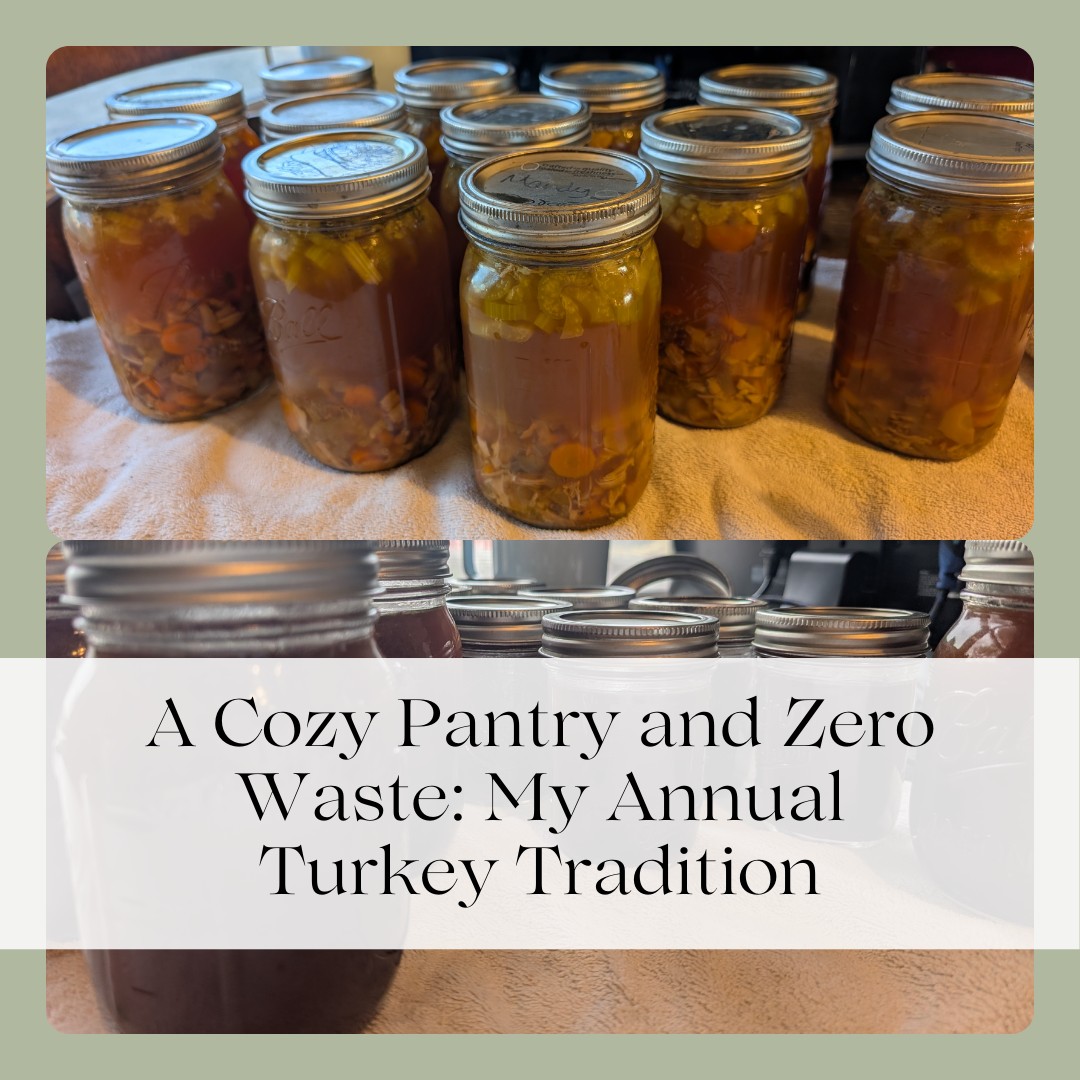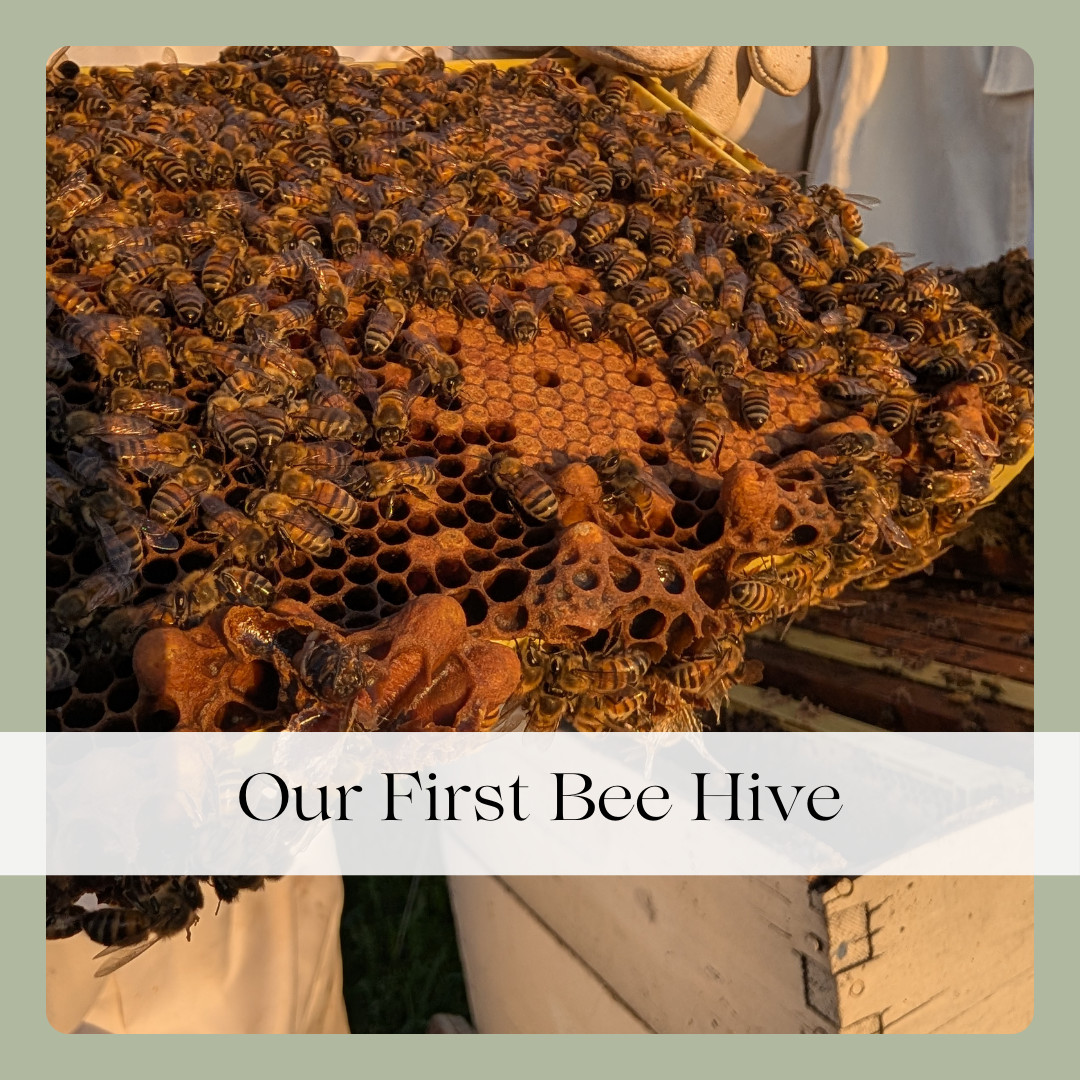
Canning seems to be one of those long-lost skills that is making it's way back into homes again. Yes, some have continued to do it. But with homesteading on the rise, there are so many who have never canned and didn't grow up with it either. I have been canning, off and on, for almost 15 years. It was a necessity due to some of my daughter's special dietary needs. For the past year or 2 I have been canning more regularly and it's such a great feeling when I open up my pantry and see all of my home-canned goods. Not only do I know exactly what is in each jar, but it's also a nice feeling to know that I am contributing to my family's health and that we don't have to rely on other people/stores for our food.
Now, let's talk about water bath canning. It is an excellent option for high-acid foods such as fruits, jams, jellies, and pickles. It’s easy to master and doesn’t require any fancy equipment beyond a large pot and a few canning supplies. In this post, I’ll walk you through the steps for water bath canning. Two of my favorites to can are applesauce and pear or apple slices. I'll be sharing those recipes soon!
What is Water Bath Canning?
Water bath canning is a method used for preserving high-acid foods by submerging jars in boiling water for a specified amount of time. The heat forces air out of the jars, creates a vacuum seal, and destroys mold, yeast, and bacteria that could cause spoilage.
Equipment You’ll Need:
- A large pot with a lid (canner or a deep stockpot)
- Canning rack (or something to keep jars off the bottom of the pot)
- Canning jars with lids and bands
- Jar lifter
- Ladle and funnel
- Towels and cloths for wiping jars
- Non-metallic spatula for removing air bubbles
- Labels for marking contents and date
*Most of your canning supplies can be found in a set like this: Canning Supplies Starter Kit - be sure you check measurements to ensure that the canning rack fits into you stockpot or canner.
Steps for Water Bath Canning:
1. Prepare Your Jars and Lids
- Start by inspecting your jars for any cracks or chips. Only use those in perfect condition.
- Wash your jars in hot soapy water, or run them through a dishwasher cycle to sanitize them.
- Submerge the jars in your large pot filled with water, make sure you have the canning rack in the bottom of the pot. Bring the water to a simmer (not a full boil) and keep the jars hot until you’re ready to use them. This helps prevent cracking when adding hot food.
- Place the lids in a small saucepan of simmering water (do not boil) to soften the sealing compound.
2. Prepare the Recipe
Make sure whatever you are canning is made and ready to go before you start the canning process. Some items, like applesauce, can be cooking while you prep your canner and bring it up to the proper heat.
Make sure whatever you are canning is made and ready to go before you start the canning process. Some items, like applesauce, can be cooking while you prep your canner and bring it up to the proper heat.
3. Fill the Jars
- Remove one jar at a time from the simmering water, using your jar lifter. Pour out any water inside.
- Use a funnel to fill the jar with your prepared food, leaving the appropriate headspace (usually 1/2 inch for fruits).
- Use a non-metallic spatula to remove any trapped air bubbles by gently sliding it down the sides of the jar.
- Wipe the rim of the jar with a clean, damp cloth dipped in vinegar to ensure a proper seal.
- Place a lid on the jar and screw on the band until fingertip-tight (don’t overtighten).
4. Process the Jars
- Once the jars are filled and sealed, place them on a canning rack inside your pot of boiling water. Make sure there’s at least 1-2 inches of water covering the jars. If you need to add more water, make sure it is hot water.
- Place the lid on the pot and bring the water to a rolling boil. If using a canner, do not use the pressure cap.
- Start timing once the water reaches a full boil. Most fruit recipes require 20–30 minutes of processing, but always refer to your recipe for exact times.
- Also be sure you adjust times for your altitude.
5. Cool the Jars
- Once the processing time is complete, turn off the burner and remove the lid. DO NOT move the canner off of the burner.
- Let sit for 5 minutes, then carefully remove the jars using the jar lifter. Place them on a towel or wooden board, leaving space between jars.
- Allow to cool for 12–24 hours without touching the lids or bands. As the jars cool, you’ll hear the satisfying "ping" sound that indicates they’ve sealed.
6. Check the Seal
- After 24 hours, check the seals by pressing down on the center of each lid. If the lid does not pop back, it’s sealed. If it pops, you’ll need to refrigerate the jar and consume the contents within a week.
- Once sealed, remove the screw-on ring. You do not want to store the jars with the ring on because it can give you a false seal. If the jar is properly sealed, the lid will stay on until you open it.
7. Store and Enjoy
- Label your jars with the contents and the date. Store them in a cool, dark place. Properly sealed jars will last up to a year or more.
- When you open the sealed jar, use a ring to keep it closed.
- Refrigerate after opening.
A Note of Caution:
When it comes to canning, safety is key. It’s essential to only use approved canning recipes from trusted sources like the USDA, Ball, or other reputable food preservation organizations. These recipes have been tested to ensure they provide the right acidity levels and processing times to prevent the growth of harmful bacteria, particularly botulism, which thrives in low-acid, improperly canned foods. By following tested recipes, you’ll ensure that your canned goods are safe for your family to enjoy.
When it comes to canning, safety is key. It’s essential to only use approved canning recipes from trusted sources like the USDA, Ball, or other reputable food preservation organizations. These recipes have been tested to ensure they provide the right acidity levels and processing times to prevent the growth of harmful bacteria, particularly botulism, which thrives in low-acid, improperly canned foods. By following tested recipes, you’ll ensure that your canned goods are safe for your family to enjoy.
Happy Canning!
🌸 From my homestead heart to yours —
If you’re walking this same journey of homemaking, decluttering, and creating a peaceful, faith-filled home, you’re not alone.
I’d love to share encouragement, simple living inspiration, and homestead wisdom with you — right to your inbox.
If you’re walking this same journey of homemaking, decluttering, and creating a peaceful, faith-filled home, you’re not alone.
I’d love to share encouragement, simple living inspiration, and homestead wisdom with you — right to your inbox.
– Amanda | The HomeGrown Mom 🌾




















0 Comments